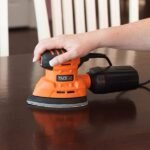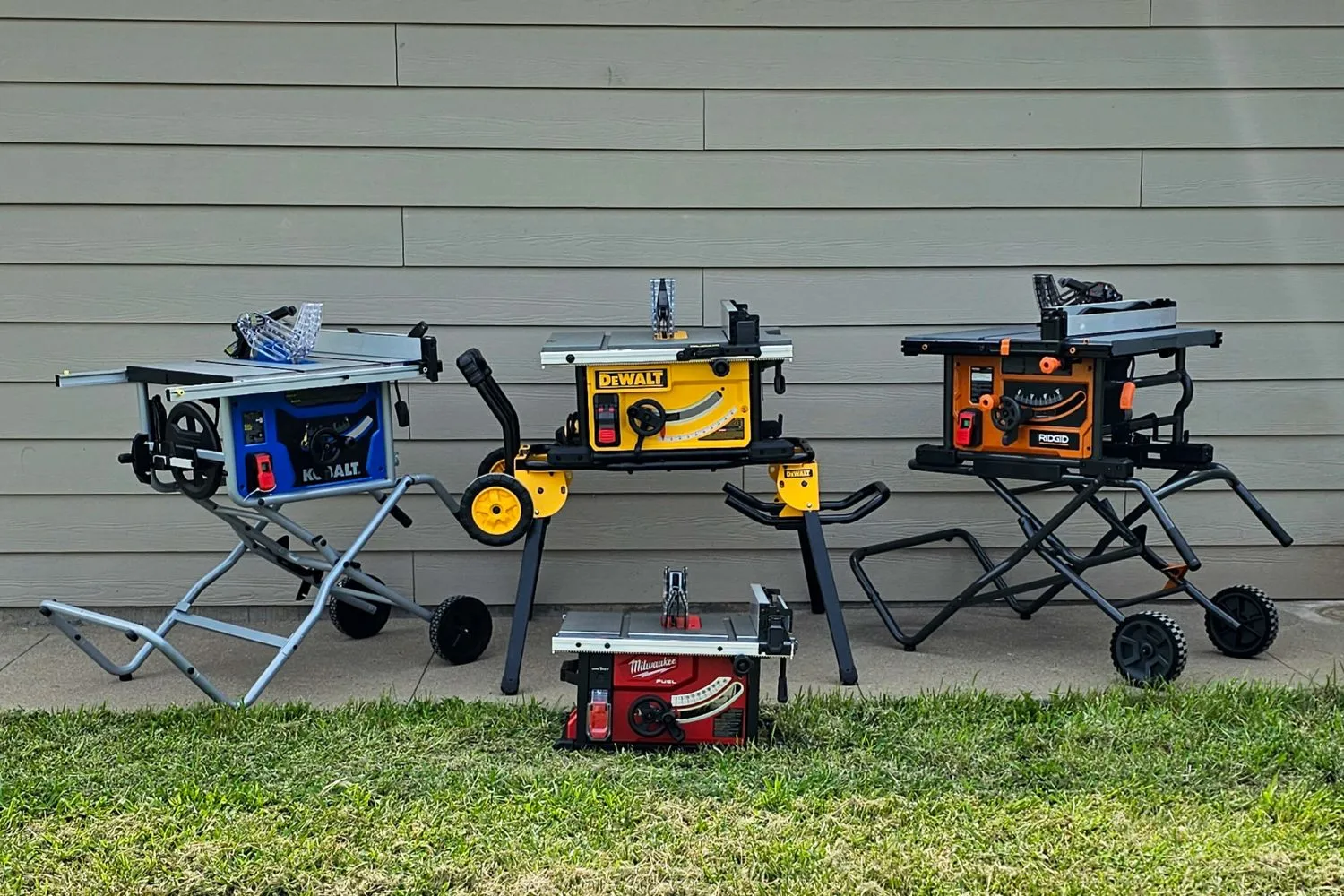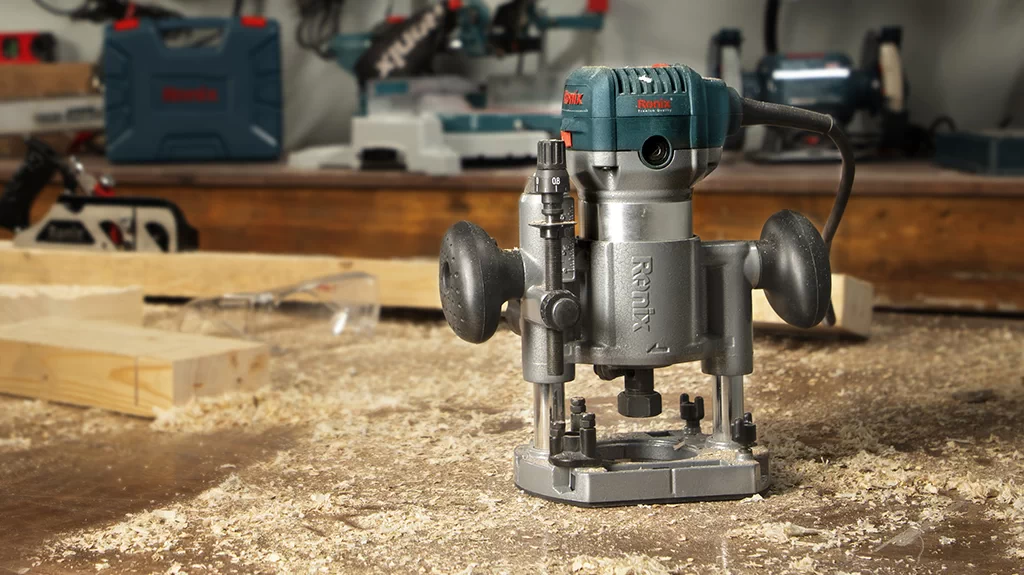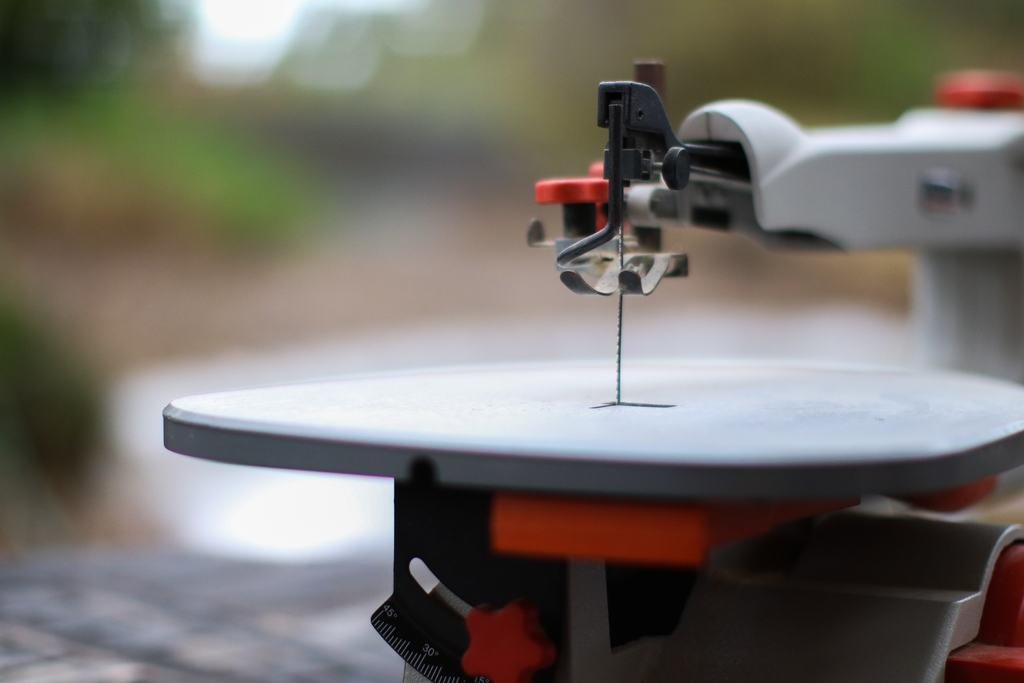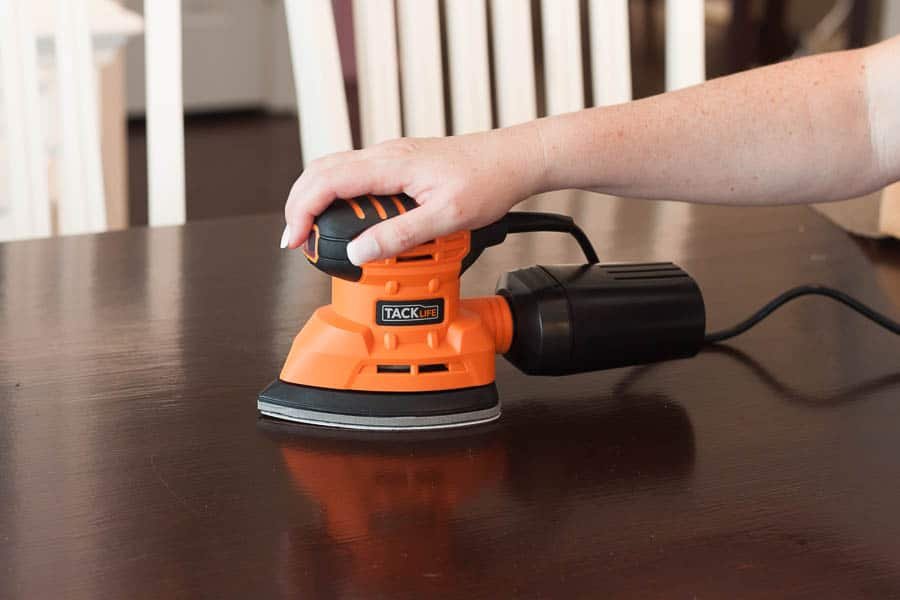Table saws represent a cornerstone tool in the woodworking world, offering unmatched versatility and precision. As a fundamental piece of equipment, they are designed to cut large pieces of wood and other materials with ease and accuracy.
The setup typically includes a circular saw blade mounted on an arbor, driven by an electric motor, with the blade protruding through the surface of a table.
This design allows for a range of cuts, including rip cuts, crosscuts, miter cuts, and bevel cuts, making the table saw an indispensable tool for both novices and seasoned woodworkers.
The diversity of tasks that a table saw can handle underscores its essential role. Whether you’re constructing furniture, crafting cabinetry, or engaging in general carpentry, the table saw provides the capability to achieve clean, straight cuts time and again.
This precision is vital, especially for beginners who are still honing their skills and need reliable performance to produce quality outcomes. Different blade types and accessories further expand the functionality, enabling more specialized cuts and finishes.
Choosing the best table saw for a beginner is crucial not only for the quality of the work but also for safety and ease of use. Beginners should look for features such as a reliable fence system, easy-to-use blade adjustment mechanisms, and essential safety features like blade guards and riving knives.
These factors help reduce the learning curve and minimize the risk of accidents, allowing novices to focus on developing their techniques without compromising on safety.
In essence, a table saw is more than just a cutting tool; it is a gateway to mastering the craft of woodworking. By selecting the right model tailored to their needs, beginners can ensure a smoother, safer, and more enjoyable woodworking experience.
Understanding the importance of this tool and its capabilities sets the foundation for making informed choices as one embarks on their woodworking journey.
Table of Contents
Key Features to Look for in a Beginner Table Saw
When selecting the best table saw for a beginner, several key features significantly impact the tool’s usability, safety, and overall performance. Understanding these features can make the difference between a smooth woodworking experience and a potentially frustrating one.
Safety Features: Safety should be a top priority for any woodworker, especially for beginners. Essential safety components include blade guards, which protect the user from accidental contact with the spinning blade.
Anti-kickback pawls are also crucial as they help prevent the wood from kicking back towards the user, reducing the risk of injury. Additionally, a riving knife can help prevent the wood from pinching and causing kickback.
Ease of Use: For beginners, the table saw should be intuitive and easy to operate. Look for adjustable fences that can be easily aligned and locked in place. Clear measurement scales are also vital, as they ensure accurate cuts and reduce the likelihood of errors.
A good table saw will have a smooth and easily operable blade height and angle adjustments, allowing for precise cuts without much hassle.
Portability: While some table saws are stationary, beginners may benefit from a portable model. These saws are typically lighter and may come with folding stands or wheels, making them easier to move around the workshop or transport to different job sites.
Portability does not have to compromise stability; many portable table saws offer robust performance comparable to stationary models.
Power: The power of the table saw determines its cutting capability. For beginners, a saw with a motor in the range of 1.5 to 2 horsepower is generally sufficient. This power range allows for smooth cutting through various types of wood without overwhelming the user with excessive force.
An efficient dust collection system can also enhance power efficiency and maintain a cleaner workspace.
In summary, when searching for the best table saw for beginners, prioritize safety features, ease of use, portability, and adequate power. These elements will ensure a user-friendly experience and help cultivate woodworking skills effectively.
Top Table Saw Brands for Beginners
When embarking on your woodworking journey, selecting the best table saw for beginners can significantly impact your experience and outcomes. Several reputable brands stand out for their commitment to quality, ease of use, and safety features, making them ideal choices for novice woodworkers.
DeWalt is a well-regarded brand in the power tool industry, known for producing reliable and durable equipment. Their table saws are particularly favored by beginners due to features such as easy-to-adjust fences, clear and precise measurements, and robust safety mechanisms.
Customer reviews frequently highlight the user-friendly nature of DeWalt’s products, which contribute to a smoother learning curve for new users.
Bosch is another prominent name that consistently delivers high-quality table saws suited for beginners. Bosch table saws are praised for their innovative designs and advanced safety features, including Smart Guard System and anti-kickback pawls.
These features not only enhance safety but also provide beginners with the confidence to tackle various woodworking projects.
Additionally, Bosch’s commitment to producing portable and compact models makes them a practical choice for those with limited workspace.
Skil is often recommended for those seeking budget-friendly options without compromising on quality. Skil table saws are renowned for their straightforward assembly and operation, making them accessible to beginners who might be daunted by more complex machinery.
Despite their affordability, Skil ensures that their saws are equipped with essential features like accurate cutting guides and robust motors, ensuring that beginners can achieve precise cuts with ease.
Each of these brands—DeWalt, Bosch, and Skil—offers unique advantages that cater to novice woodworkers. By focusing on user-friendly designs, safety features, and reliability, they provide some of the best table saws for beginners, helping to foster a positive and productive woodworking experience.
Detailed Reviews of the Best Table Saws for Beginners
Choosing the best table saw for a beginner involves considering various factors, including ease of use, safety features, and overall value for money. Here, we delve into detailed reviews of some highly recommended models.

DeWalt DWE7485
The DeWalt DWE7485 is a compact job site table saw that offers both power and portability. It features a 15-amp motor that delivers up to 5800 RPM, making it capable of handling a range of cutting tasks.
The saw has a rack and pinion telescoping fence system, which ensures smooth and accurate fence adjustments. Additionally, it comes with a metal roll cage base that provides durability and stability.
Specifications:
- Motor: 15-amp
- RPM: 5800
- Weight: 46 pounds
- Rip Capacity: 24.5 inches
Key Features:
- Rack and pinion fence system
- Metal roll cage
- On-board storage for easy access to tools
Pros:
- Highly portable
- Powerful motor
- Accurate fence adjustments
Cons:
- Limited rip capacity for larger projects
- Blade height adjustment can be stiff
Price Range: $399 – $499
SKIL 3410-02
The SKIL 3410-02 is another excellent choice for beginners. It comes with a 15-amp motor and a 10-inch carbide blade, providing robust performance for various woodworking tasks.
The saw features a heavy-duty steel folding stand, which offers stability and easy setup. It also has an extendable table that can handle larger workpieces with ease.
Specifications:
- Motor: 15-amp
- Blade: 10-inch carbide
- Weight: 67 pounds
- Rip Capacity: 24.5 inches
Key Features:
- Heavy-duty steel folding stand
- Extendable table
- Self-aligning rip fence
Pros:
- Good value for money
- Stable and durable
- Easy to set up
Cons:
- Heavier than some competitors
- Dust collection could be better
Price Range: $299 – $399
Bosch GTS1031
The Bosch GTS1031 is a versatile and portable table saw that is perfect for beginners. It features a 15-amp motor and a 10-inch blade, providing sufficient power for a variety of cuts.
The saw is designed with a one-handed carry handle, making it easy to transport. It also includes a smart guard system with a riving knife and anti-kickback pawls for enhanced safety.
Specifications:
- Motor: 15-amp
- Blade: 10-inch
- Weight: 52 pounds
- Rip Capacity: 18 inches
Key Features:
- One-handed carry handle
- Smart guard system
- SquareLock rip fence
Pros:
- Highly portable
- Enhanced safety features
- Easy to use
Cons:
- Smaller rip capacity
- Higher price point
Price Range: $499 – $599
By considering these detailed reviews and specifications, beginners can make an informed decision when selecting the best table saw for their needs. Each model offers unique features and advantages, ensuring there’s an option suitable for a variety of woodworking projects.
Safety Tips for Using a Table Saw
Ensuring safety while using a table saw is paramount, especially for beginners. Proper setup is the first step towards safe operation. Before starting, make sure your table saw is on a stable surface and that all components are securely attached.
Always read the manufacturer’s instructions to familiarize yourself with the specific features and safety mechanisms of your saw.
Safe operation practices are crucial to prevent accidents. Always use a push stick or push block to guide the wood through the saw blade, keeping your hands at a safe distance. Never reach over the blade, and ensure the blade guard is in place and functioning correctly.
It’s also essential to stand to the side of the blade rather than directly in line with it, to avoid potential kickbacks.
Maintenance is another critical aspect of safe table saw use. Regularly inspect the blade for sharpness and replace it if it becomes dull or damaged. Clean the sawdust and debris from your table saw after each use to maintain clear visibility and prevent buildup that could cause operational issues.
Keeping the components well-oiled and in good condition will also prolong the life of your saw and ensure it operates smoothly.
Wearing appropriate safety gear is non-negotiable. Safety goggles are essential to protect your eyes from flying debris, while ear protection can prevent hearing damage from prolonged exposure to the saw’s noise.
A dust mask is recommended to avoid inhaling fine particles, and wearing fitted, non-slip gloves can provide a better grip and additional hand protection.
Finally, staying focused is crucial when operating a table saw. Avoid distractions and never use the saw when you are tired or under the influence of substances that could impair your judgment or coordination. Double-checking all settings and measurements before making a cut can prevent mistakes and enhance safety.
By adhering to these safety tips, beginners can confidently and safely use their table saws, ensuring a productive and accident-free woodworking experience.
Setting up your table saw for the first time is a crucial step for any beginner aiming to ensure both safety and precision in their woodworking projects. Following a systematic approach will help you get the best table saw for beginner use operational and ready for your first project.
Unboxing and Assembling the Saw
Begin by carefully unboxing your table saw, ensuring you have all components and the manual handy. Lay out the parts in an organized manner to facilitate smoother assembly. Most table saws come with a detailed instruction manual; adhering closely to these guidelines ensures correct assembly.
Start with the base, attaching legs or stands if provided. Gradually assemble the table, motor, and other parts as per the manufacturer’s instructions.
Calibrating the Blade
Once assembled, attention must turn to calibrating the blade. Proper blade alignment is vital for accurate cuts and prevents potential accidents. Check the blade to ensure it is perpendicular to the table surface. Use a combination square or an alignment tool for precision.
Adjusting the blade tilt and ensuring it sits correctly in the arbor is essential. Tighten all bolts securely to maintain this alignment during use.
Aligning the Fence
Next, focus on the fence, which is integral to making straight and accurate cuts. Align the fence parallel to the blade. This can be done by measuring the distance between the blade and the fence at both the front and back.
Adjust the fence until these measurements are equal, ensuring it locks firmly in place without any wobble. Some models may offer micro-adjustment features, which can be beneficial for achieving finer alignment.
Making Your First Test Cuts
With your table saw assembled and calibrated, it’s time to make your first test cuts. Use scrap wood to make initial cuts, checking for accuracy and smoothness.
This process will help you get accustomed to the tool’s operation and fine-tune any settings. Ensuring the blade height and fence placement are correct will contribute to achieving clean, precise cuts.
By following these steps, you can set up your table saw effectively, ensuring it is ready for use. Proper setup not only enhances the performance of the best table saw for beginner woodworkers but also lays a strong foundation for safe and efficient woodworking practices.
Basic Projects to Get Started
Embarking on your woodworking journey with the best table saw for beginners can be both exciting and rewarding. To gain confidence and build essential skills, starting with simple projects is crucial. Here are a few straightforward woodworking projects that can be accomplished with ease, helping you familiarize yourself with your table saw and its capabilities.
1. Cutting Board
Materials: Hardwood (e.g., maple, walnut, or cherry), wood glue, sandpaper, mineral oil.
Instructions:
1. Select and cut your hardwood into strips of equal width using the table saw.
2. Arrange the strips in a pattern and apply wood glue between each strip.
3. Clamp the glued strips tightly and let them dry overnight.
4. Once dry, use the table saw to trim the edges, ensuring a clean, rectangular shape.
5. Sand the cutting board until smooth using fine-grit sandpaper.
6. Finish by applying food-safe mineral oil to the surface.
Tips: Double-check your measurements and cuts for precision. Use push sticks for added safety when cutting narrow strips.
2. Birdhouse
Materials: Cedar or pine wood, nails, wood glue, sandpaper, exterior paint or stain.
Instructions:
1. Cut the wood into the necessary pieces: front, back, sides, roof, and base.
2. Use the table saw to create an entrance hole in the front piece.
3. Assemble the pieces using wood glue and nails, ensuring the sides and base are securely attached.
4. Attach the roof pieces at an angle for proper drainage.
5. Sand all edges to remove splinters and rough spots.
6. Paint or stain the birdhouse to protect it from the elements.
Tips: Make precise cuts and use clamps to hold pieces together while the glue dries. Consider pre-drilling nail holes to prevent the wood from splitting.
3. Simple Bookshelf
Materials: Plywood or MDF, screws, wood glue, sandpaper, paint or varnish.
Instructions:
1. Cut the plywood or MDF into the required pieces for the sides, shelves, and back panel.
2. Use the table saw to make dados (grooves) in the side pieces for the shelves to fit into.
3. Assemble the bookshelf by applying wood glue to the dados and inserting the shelves.
4. Secure the shelves further with screws from the outside of the side panels.
5. Attach the back panel using screws or nails.
6. Sand all surfaces and edges for a smooth finish.
7. Paint or varnish the bookshelf as desired.
Tips: Ensure all cuts are straight and accurate. Use a square to check that all angles are 90 degrees during assembly.
These basic projects will not only help you get acquainted with the best table saw for beginners but also provide you with functional and attractive items for your home. Always prioritize safety by wearing appropriate protective gear and following manufacturer guidelines for your table saw.
Maintenance and Troubleshooting Tips
Proper maintenance is a vital aspect of owning any power tool, especially a table saw, to ensure it remains in optimal working condition. Regular upkeep not only extends the lifespan of the saw but also ensures safety and precision during operation.
For beginners, understanding basic maintenance tasks can make a significant difference in the performance of their table saw.
One of the primary maintenance tasks is cleaning. After each use, it’s essential to remove sawdust and debris from the table surface, miter gauge slots, and underneath the blade guard. Using a brush or compressed air can help in reaching tight spaces.
Accumulated dust can affect the accuracy of cuts and may even pose a fire hazard. Additionally, keeping the work area clean prevents rust and corrosion on metal parts.
Lubrication is another key maintenance activity. Moving parts such as the arbor, trunnions, and gears should be regularly lubricated with a manufacturer-recommended lubricant. This ensures smooth operation and reduces wear and tear.
Beginners should consult their table saw’s manual to identify specific parts that require lubrication and the recommended frequency.
Blade maintenance is crucial for achieving clean and precise cuts. Over time, blades can become dull or coated with resin, affecting the quality of cuts. Beginners should periodically inspect the blade for sharpness and cleanliness.
Using a blade cleaner can remove resin buildup, and sharpening or replacing the blade when necessary keeps the saw performing its best. For those unsure about sharpening, consulting a professional service might be advisable.
Beginners might encounter common issues such as misaligned blades, inaccurate cuts, or the saw not starting. Misalignment can be checked by measuring the distance from the blade to the miter slot at both the front and back of the blade.
Adjusting the trunnions can correct any misalignment. Inaccurate cuts could be due to a dull blade or improper fence alignment, both of which should be inspected and adjusted accordingly.
If the saw fails to start, checking the power supply, ensuring the safety key is in place, and verifying that the reset button hasn’t tripped are good initial steps.
By following these maintenance and troubleshooting tips, beginners can keep their table saws in top condition, ensuring both safety and performance. Investing time in proper upkeep will pay off in the long run, making the woodworking experience more enjoyable and productive.


